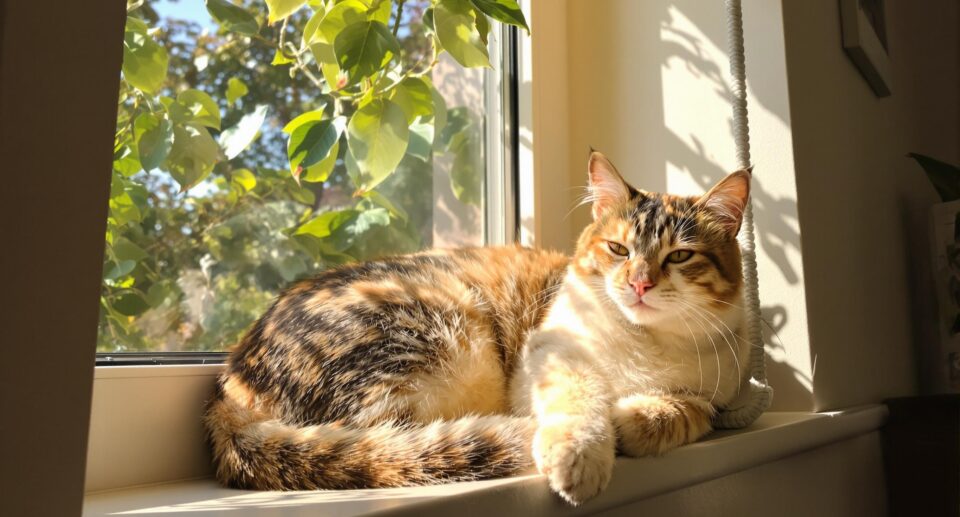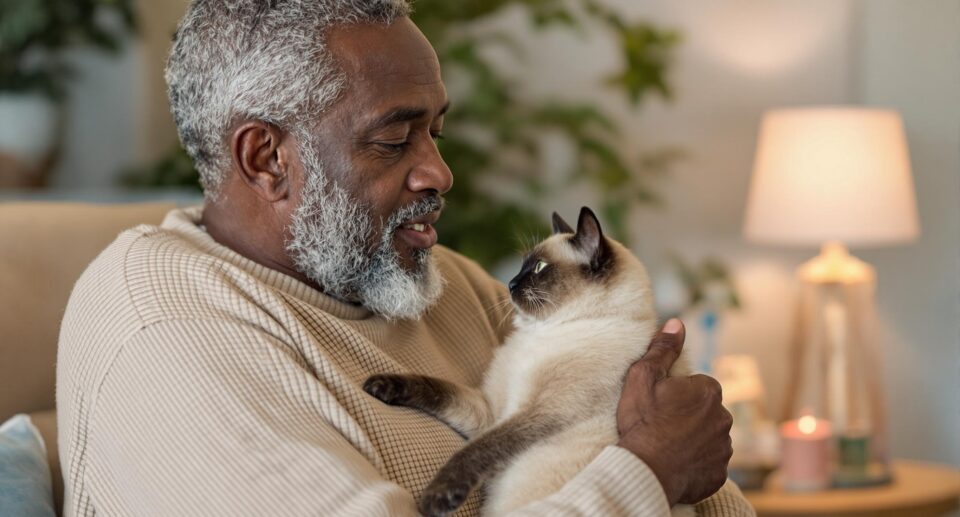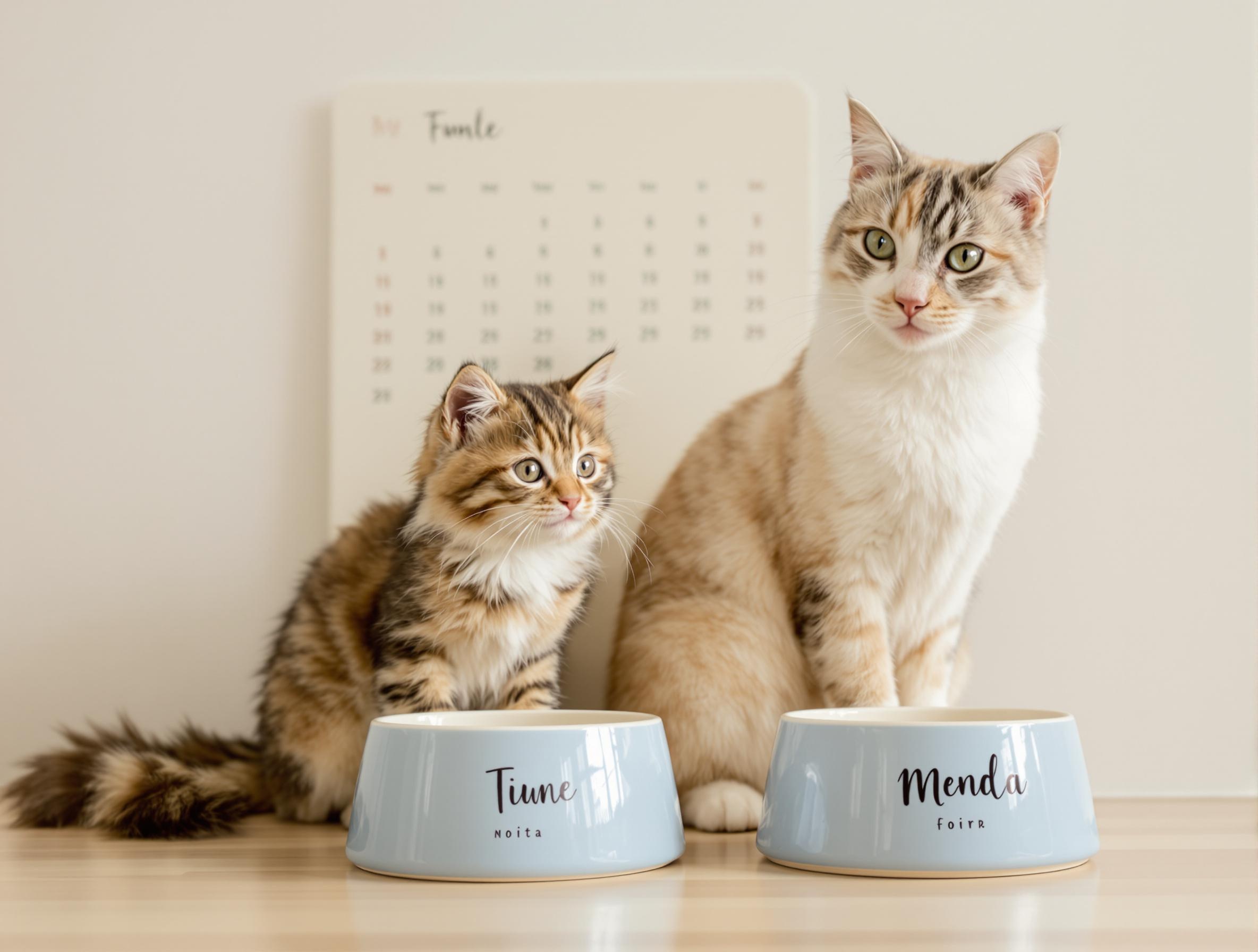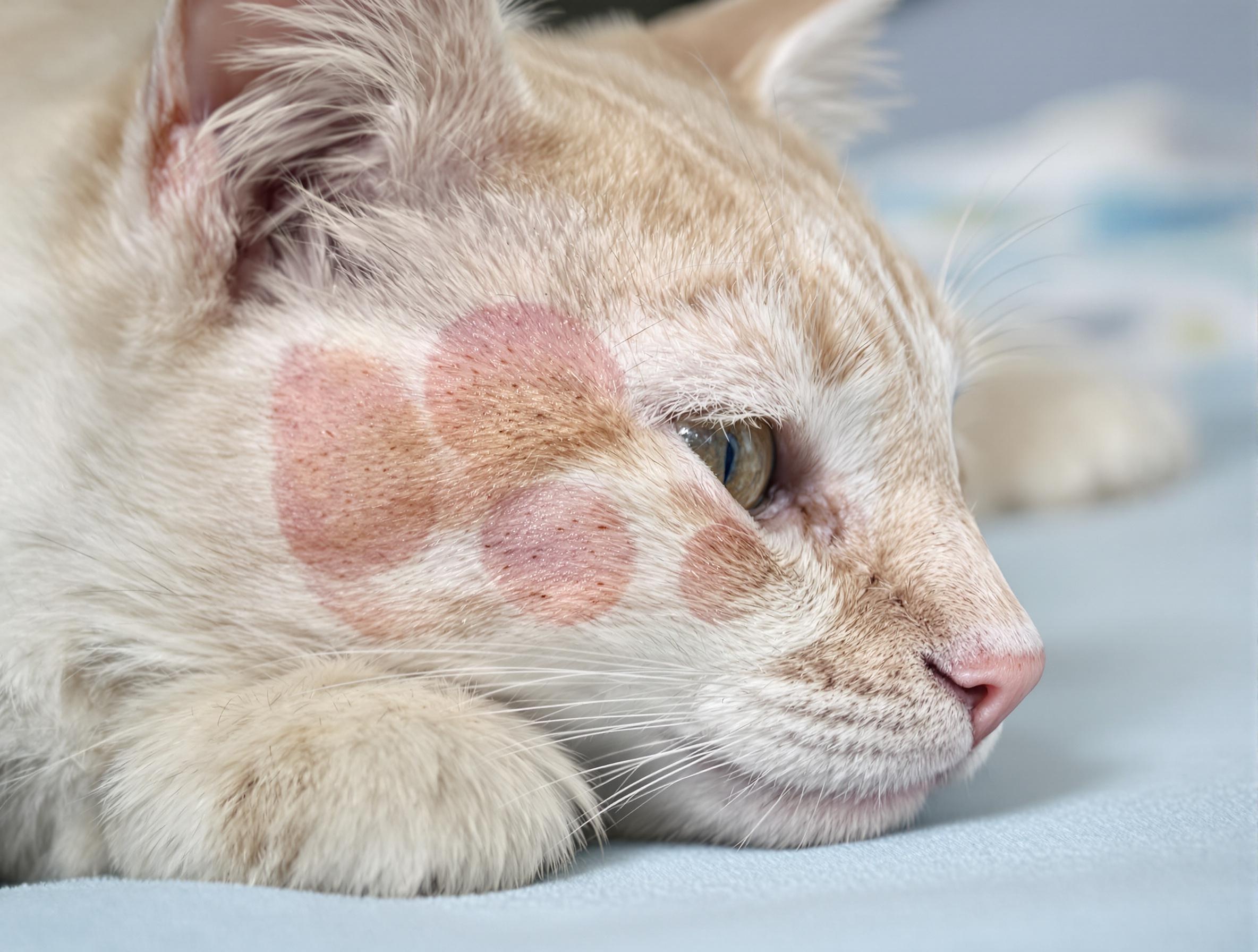How to Pet a Cat: Building Trust and Affection

Key takeaways:
- Understanding your cat’s unique petting preferences strengthens the bond of trust and affection.
- Positive body language cues like purring and head bunting indicate a cat’s contentment during petting sessions.
- Observe and respect your cat’s signals, such as twitching tails or shifting positions, to ensure a positive petting experience. If you’re ever unsure about what your cat’s behavior means, your vet is the best resource for personalized guidance to keep the experience positive.
If your cat is particular about when, where, and how they like to be petted, it isn’t just quirky behavior. It’s an important part of how your cat communicates. Learning how to pet a cat properly builds trust and affection. Every gentle touch becomes a way to connect and reassure your cat.
Cats who grow up with kind human interaction tend to be more social as adults. PetHealthMD emphasizes how important it is to recognize your cat’s favorite ways to be petted. Respecting what your cat likes builds trust and turns every petting session into a moment they enjoy. If you’re not quite sure whether your cat is enjoying the interaction, a quick check-in with your vet can offer peace of mind and personalized advice.
Does Your Cat Want You to Pet Them?
Before you reach out to pet your cat, it’s worth asking, “Do they actually want to be petted right now?” Cats aren’t always in the mood, and their interest in affection can shift from moment to moment. The best way to tell is by watching how they approach you and the signals they give.
If your cat walks up with their tail up, gives you a gentle nuzzle, or rubs against your leg, that’s their way of saying they’re open to interaction. On the flip side, if they’re hunched, hiding, or avoiding eye contact, they may not be up for touch. Giving your cat the choice to opt in or out helps reinforce trust and respect.
Letting your cat lead the way shows them they’re in control of their comfort. It’s even more rewarding when your cat picks the moment and comes over for some attention. They’re showing you they trust you and feel safe enough to ask for a little love.
For enrichment tools that help strengthen your bond, explore Cat Toys and Cat Treats to encourage positive interaction and play.

How to Pet a Cat Properly
Petting isn’t just about physical affection. It’s how cats and humans speak the same language. Using the right touch shows your cat that you’re a trusted, respectful presence in their space. These gentle techniques create a sense of safety and help your cat feel truly seen and appreciated.
Focus on the Sweet Spots
Scratch gently behind the ears or under the chin where your cat naturally releases feel-good pheromones. These areas are packed with scent glands and feel especially soothing when gently scratched. Focusing on these spots often encourages bonding and builds trust. Most cats welcome gentle strokes on their face, head, and behind the ears, frequently initiating contact through bunting—a behavior where they rub their scent glands against you to create a shared family scent.
Stroke Their Back
Glide your palm smoothly along their back, using long, gentle strokes from head to tail. This mimics their mother’s grooming and creates a sense of security. Always move in the direction of their fur and pay attention to how they respond.
Be Cautious with the Belly
Let your cat guide belly touches. If they roll over and show their tummy, they’re sharing a moment of trust with you. However, many cats are sensitive in this area and may not want to be touched there. Always observe their reaction and let them guide the interaction.
Let Your Cat Choose the Moment
Nuzzling or leaning in is your cat’s way of saying, “I’m ready for attention.” Waiting for these signs ensures your cat is comfortable and reinforces that you respect their timing.
Watch Their Reactions
Read their body language during petting sessions. Look for relaxed whiskers and soft eyes as signs to continue your gentle touch. These cues often go hand-in-hand with relaxed postures and show they’re enjoying the moment. Noticing and respecting these signs deepens the trust you’ve built and leads to more joyful, relaxed moments together.
Common Mistakes to Avoid When Petting a Cat
Just like humans, cats appreciate their space, and knowing when to pause is just as important as knowing how to pet. A flicking tail, tensed body, or a sudden swat are all ways your cat may say, “that’s enough for now.” If your cat often reacts negatively to touch or seems unusually sensitive, it might be more than just a mood. Your veterinarian can help rule out any discomfort or underlying health issues.
Let’s explore gentle ways to avoid these common petting missteps:
- Reaching down from above: Many cats feel uneasy when hands approach from overhead. Try sitting at their level and offering your hand from the side.
- Rushing into physical contact: Give your cat time to welcome attention. Let them come to you and sniff your hand first.
- Continuing to pet when your cat needs space: Watch for cues like a twitching tail or turning ears.
- Touching sensitive spots: Focus on safe areas such as the cheeks, chin, and back.
- Missing subtle body language: When they move away or tense up, give them time to relax before trying again.
When in doubt, always give your cat the freedom to walk away. Giving them control over when petting starts and ends helps them feel safe and respected.
For cats who are sensitive to touch, consider calming aids or pheromone diffusers from Cat Anxiety & Calming Products, soothing options from Cat Health Supplies, or grooming tools from Cat Grooming Supplies to make bonding time even more relaxing.
Frequently Asked Questions About Petting Cats
How do I know if my cat likes being petted?
If your cat leans into your hand, purrs, kneads, or gives you slow blinks, those are great signs they’re enjoying the interaction. Just be sure to watch for signs of overstimulation, like tail flicking or sudden grooming.
Why does my cat suddenly bite me when I’m petting them?
This is often a sign of overstimulation. Even if your cat enjoys the attention at first, too much petting—especially in sensitive areas—can become overwhelming. It’s their way of saying they need a break.
Can I teach my cat to enjoy being petted?
Yes! Start by watching their body language and only petting them in spots they’re comfortable with. Keep sessions short and positive, and let your cat take the lead. Over time, they may become more receptive to physical affection.
Where do cats usually like to be petted?
Most cats enjoy gentle strokes around the face, behind the ears, under the chin, and along the back. Each cat has unique preferences, so take cues from their body language and reactions.
Strengthening Your Bond Through Mindful Petting
Learning how to pet a cat is more than just giving them a few gentle strokes. It’s about building real connections through comfort and trust. When you take the time to notice what your cat enjoys and respect their signals, those everyday moments turn into something special. It’s a simple but meaningful way to strengthen your bond and enjoy more peaceful, affectionate time together.
Explore more helpful cat care insights and shop trusted Cat Supplies at 1800PetMeds.com—your partner in lifelong pet wellness.





